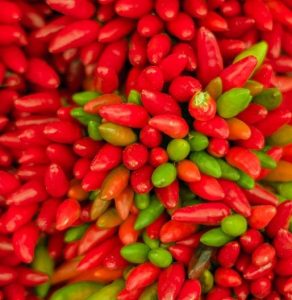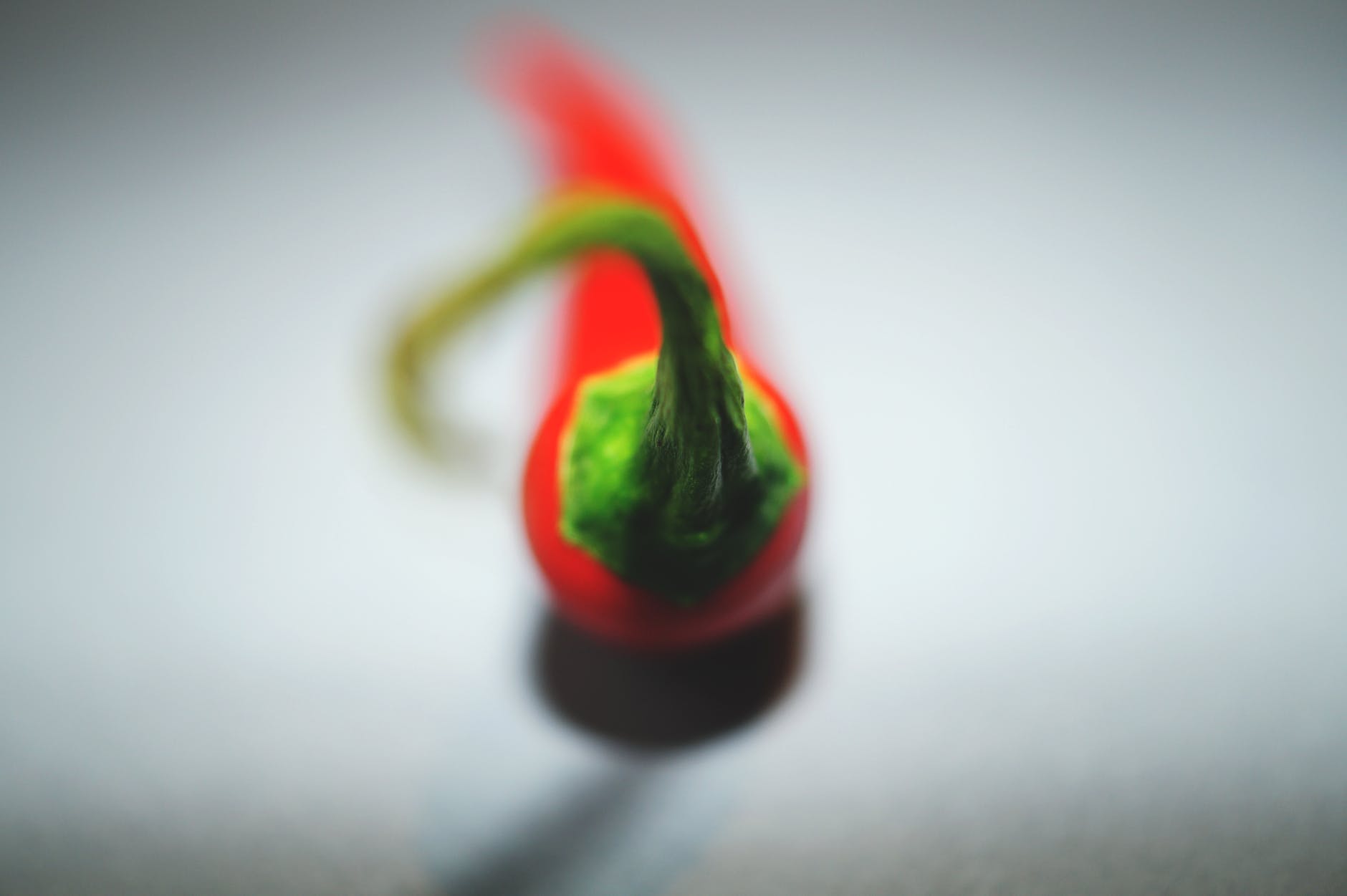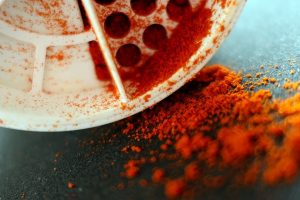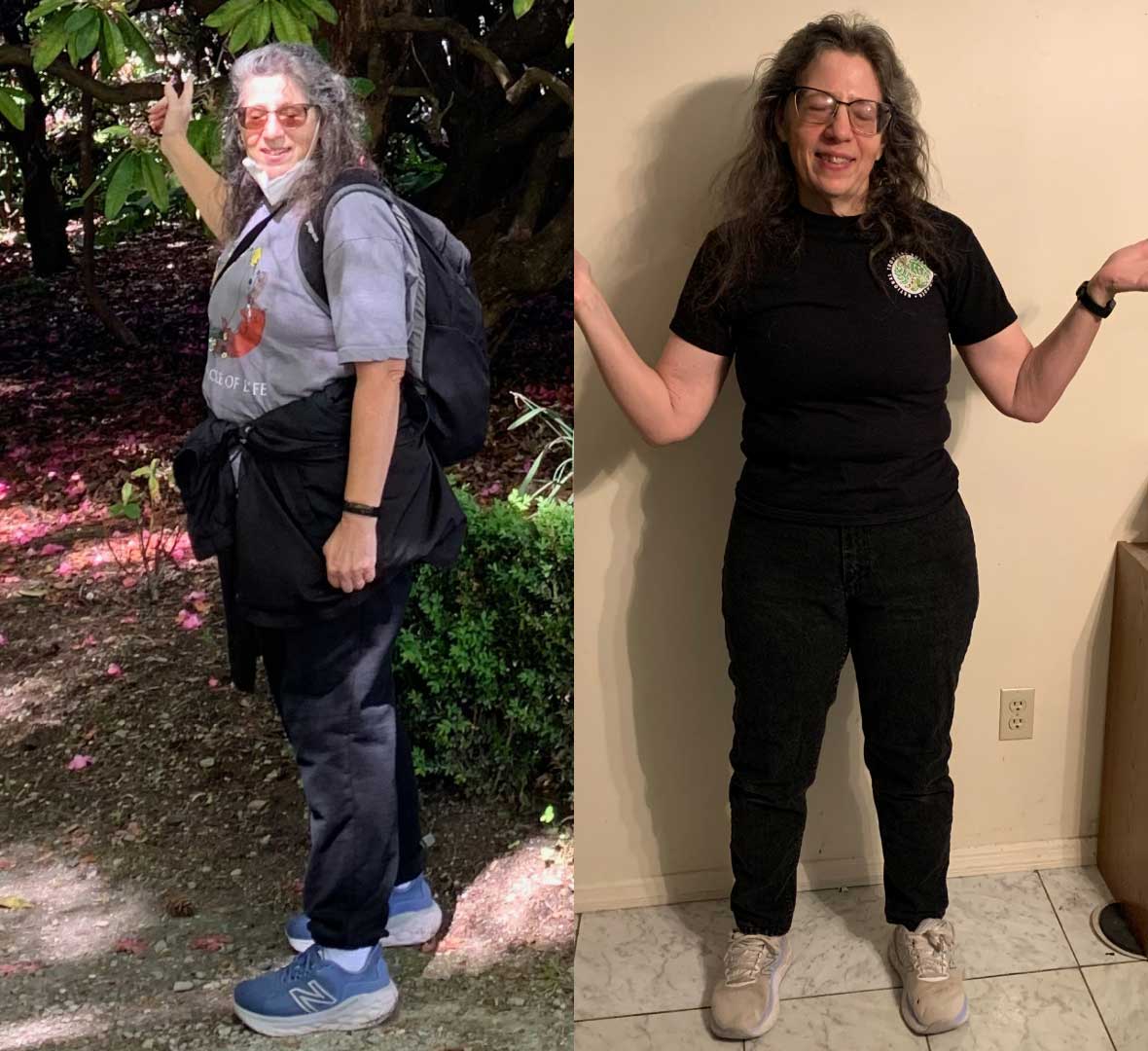What are the benefits of capsaicin for weight loss?
Though I didn’t know it at the time, I grew up eating food spiced with capsaicin (the main compound in chilis). Dashes of vibrant red chili peppers ground into fine powder went on almost everything. It was always on our table. My family took turns passing the magic red chili dust back and forth, adding spices with capsaicin (awesome for weight loss) to almost every dish.

When I moved out of my parent’s house and started eating more standard American food, I couldn’t believe how bland it was! I also started slowly gaining more weight. Hmm. Connection?
I didn’t know all that capsaicin I was enjoying earlier in life had been increasing the “brown fat” in my body, and I didn’t know what a good thing that was! I just knew a pinch made every dish come alive with intense flavor.
Now that I know how much capsaicin boosts weight-loss, it’s earned a place of honor in my spice drawer and it’s back to blasting away fat cells in my body.
I’m excited to share how capsaicin can be a dynamic weight-loss tool for you! Read on to learn all about this fat-flaming spice compound.
Capsaicin for Weight Loss: Brown Fat vs. White Fat
Okay, so what is brown fat? Just like there are good and bad cholesterol types, LDL and HDL, there are different kinds of fat cells in our bodies.
White fat is used to store energy (aka sit there and make our arms sag and jiggle when we hail a cab). Brown fat, on the other hand, is like a tiny fat-burning machine used to evaporate the white fat cells we don’t need. (1)
Once brown fat cells are activated, they can burn up to 300 calories in 24 hours (1)
Capsaicin is like the key to the engine. It changes white fat to brown and activates thermogenesis or energy burning. (2)
Cayenne pepper benefits (coming soon) How to Burn Belly Fat Fast: Drinks, Foods & Exercises Confucius knew the benefits of ginger. Do you know how to take advantage of its ancient power? Capsaicin also helps in the regulation of proteins that play a major role in the metabolism of lipids in the body. These lipids empower the breakdown of fats so the body can use them for energy production. (3) Capsaicin is known to curb appetite. It doesn’t appear to change hunger-signal hormones, so scientists think it might be that the capsaicin in peppers creates a feeling of expansion in the belly without actually overstuffing it. (3) Researchers even found that capsaicin intake decreased fat in the midsection of 77 male and female volunteers after 6 weeks. Their waist-to-hip measurement ratios shrunk. Though the chili compound didn’t make them instantly skinny all over, it did seem to help them burn extra fat in the middle. (4) In another study, rats who ate capsaicin with a high-fat diet gained 8% less than the rats that didn’t have any capsaicin. (5) The health benefits of cinnamon (+ which kind to buy & how much to use!) Ginger tea benefits for weight loss, inflammation & memory Benefits of honey and cinnamon for weight loss, insulin sensitivity & more (+recipes) Research published in Digestive Diseases and Sciences said that capsaicin could be a natural way to combat obesity “that is nearly as effective as intensive surgeries — and with far less complications and risks.” (5) Capsaicin could also help diabetics take less insulin following a meal, since it can help to stabilize blood sugar levels. (3,5) Capsaicin is generally safe when you’re eating it in normal amounts, as you would get in food. High amounts of capsaicin (like in supplements) could cause side effects such as stomach irritation, stomach pain, bloating, and the aggravation of ulcers and heartburn. (4) There’s no exact measurement that’s considered safe, but if you add ⅛ to ½ teaspoon to a recipe (which is several servings of food) you should be fine. Of course, some people are more sensitive to spice than others. So don’t be afraid to start with a small sprinkle and work your way up to enough to add a heat kick, but still feels comfortable. Milder chili peppers, such as ancho chilies or mild jalapeños, have less capsaicin but it’s still in there! They might be a good place to start if you’re not used to spicy foods. Try milder peppers first and see what you can handle. Scoville Units are the measurement of how hot (and how much capsaicin) peppers have. Least hot pepper HOTTEST pepper Now that you know about capsaicin for weight loss and its fat-incinerating potential, which chilis are you going to try adding to your next stir-fry? Do you like it hot, hot, hot or not? Let me know in the comments!Other Ways Capsaicin Attacks Fat
When Using Capsaicin for Weight Loss, How Much Is Okay?
The hotter the pepper, the more capsaicin it has.
Here’s a list of 10 common peppers you can find in order of least spicy to spiciest.




































Thank you for this awesome article. Unfortunately, I do not like spicy food. So I think I have to find a different method for my weight loss journey.